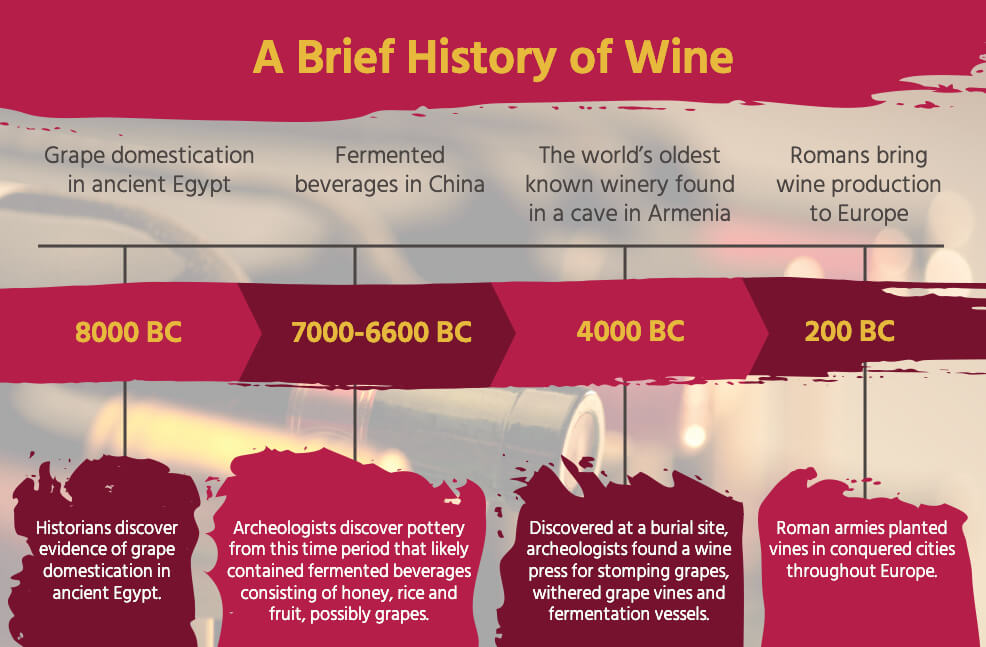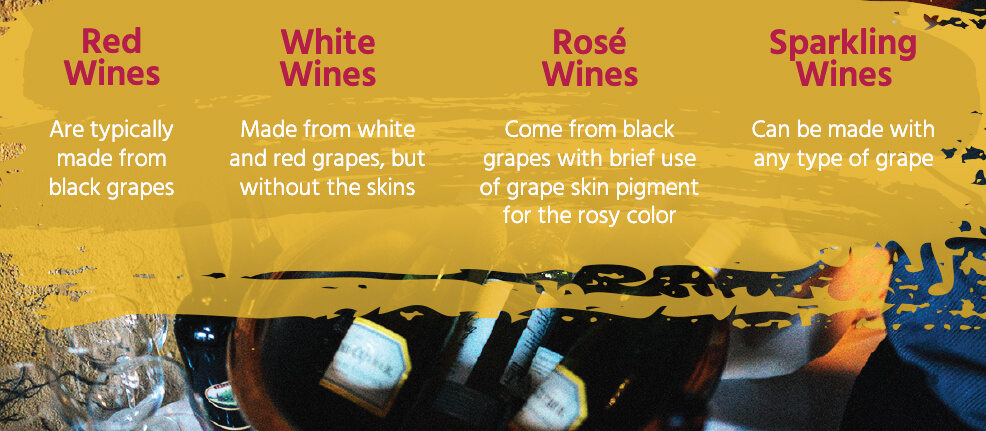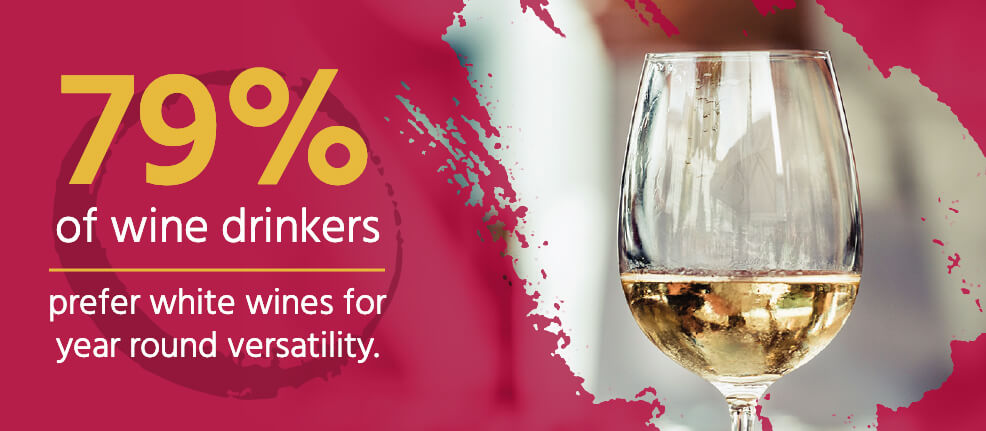Seasonal Wine Guide: Everything You Should Know

If you’re new to the world of wine, trying to find what fits your taste or have been a fan of all things wine for some time, you’ve probably noticed certain wines just seem to taste better at certain times of the year and around specific celebrations.
While we believe every season is wine season, certain wines pair better with specific seasons and celebrations. Grape seasons and growing times vary, as do the dishes we eat at various times of the year. While your favorite wines might taste great regardless of what’s happening outside, others may be best paired according to specific months and seasons.
Need help Choosing the right wine for a particular season or occasion?
In this seasonal wine guide, you’ll find everything you need to know about what makes certain wines better with various seasons. You’ll learn how to select the right wine for events, hostess gifts and more as the calendar changes.
Red wine? White wine? These questions themselves, let alone which variety of each, can be confusing. The hundreds of brands available in your local store — while wonderful — might not be the most helpful.
Selecting the perfect wine doesn’t have to be intimidating. With a little information, you’ll feel like an expert in no time. Find out how to select the best:
- Wine for summer
- Autumn wines
- Champagne for New Year’s Eve
- Winter wines
- Wines for spring
Our goal is to make you more comfortable no matter where you shop — at a store or from the comfort of your home.
WINE YOU CAN BUY FROM THE CONVENIENCE OF YOUR HOME
Shopping for wine should be fun, not a struggle! After reading this guide, know that you have experts and an easy source to turn to for trying out your soon to be favorite wine.
At Marketview Liquor, we provide a large selection of great value and hard-to-find wines. We make it easy for you shop online with discounts on cases and free shipping options on select bottles. While orders can be picked up in person at our Rochester, NY, location, they can also be shipped across the country, making it easy to shop regardless of your location.
Shopping online has traditionally been expensive, but our large warehouse facility, low overhead costs and long-standing partnerships enable us to provide low-cost options, making purchasing wine online more affordable than ever.
Since 1972, Marketview Liquor — a family-run business — has made it our mission to make wine more accessible while sharing our love and knowledge of the wine industry. We pride ourselves on providing customer favorites while continually expanding our inventory. We believe in providing the same level of service online as we do in stores, making it pleasant and affordable to shop according to your preference.
If you’re ready to learn more about selecting the right wine for the right season, dive into this guide, and then visit the wine selection of our website to get started.
We’re excited to help you select the perfect wine for your next occasion!
Table of Contents
Chapter 1: Getting Started: Red Wine? White Wine? Seasonal Wine?
If the idea of heading to the store to buy the perfect wine for a specific occasion feels overwhelming, that’s okay. If you hear people talk about grape seasons, tannins and finishes and get a little anxious, you’re not alone.
In the United States, 40% of adults drink wine, with 35% considered “high frequency” wine drinkers. While wine is obviously popular, the sheer amount of wines produced and variety of terminology can make it seem overly complicated when it should be a fun process.
To get started, this chapter will give a brief overview of wine including it’s history, some fun facts and how to get started choosing a wine. You’ll be a wine pro in no time!
A Brief History of Wine

Whether wine is one of your favorite pastimes or something you’d like to enjoy to a fuller extent, you’re a part of a rich heritage. While local wine-making has experienced a recent resurgence in popularity, wine production and enjoyment is an ancient tradition.
In fact, humans have been enjoying wine since at least 8000 BC. This is when — thanks to archeological artifacts — historians have discovered evidence of grape domestication in ancient Egypt.
Following this period, Chinese wine production emerged around 7000-6600 BC. Archeologists have discovered pottery from this time that likely contained fermented beverages consisting of honey, rice and fruit — possibly grapes.
From there, wineries probably sprung up — the world’s oldest known winery was found in a cave in Armenia that dates back 6,100 years. While it likely looked much different than the wineries we enjoy today, it’s interesting to imagine what a trip to a winery may have been like in those times.
Wine production in Europe continued — and grew — through the 1870s, when a major outbreak of phylloxera took place and destroyed most of the grapevines in the region, wreaking havoc and putting the wine process on hold. Beetles were responsible for the devastating outbreak.
Eventually, wine made its way to the Americas, in a format similar to that which we enjoy today. While the continent had native grape vines, most of the wine we enjoy in modern times has evolved from grapes brought here by Spanish conquistadors. Many of these were crossed with native varieties, creating the full spectrum of wines that are favorites today.
Because the production of wine was halted during prohibition, most modern wines in the U.S. have been cultivated in the last 90 years or so, and the number continues to rise. 60% of wine purchased in the United States hails from California, 9% from other states, and 30% from other countries. Wine production continues to rise yearly. In the U.S. alone, there are over 8,700 wineries.
Today — wine is enjoyed widely across the world. Here in the United States, the average adult consumes 2.94 gallons of wine a year.
How to choose a wine – General Guidelines to Get Started
It’s easy to assume — based on experience — that you like or dislike a certain wine, whether you’ve had the opportunity to taste it. Some of this is science — our taste buds do vary — and some is based on experience. The important thing to remember is to remain open to new ideas because you can find what you truly enjoy most.
To start narrowing down your tastes, think about the foods you appreciate in general. Are you a sweet food eater? Do you delight in spicy foods? What about full-flavored, thick pasta sauces? As you narrow down your tastes, you’ll find the wines you like may follow a similar pattern. Those who prefer spicy foods may better tolerate deeper reds. Those who go for light sauces might favor a light white over an earthy red.
After considering your favorite foods, consider the wines you’ve enjoyed in the past. Instead of focusing solely on grape varietal, take the time to read labels for words that stand out — “citrus finish,” “light,” “dry,” “full-bodied” and so on. While you may not completely understand the terms, other wines with similar descriptions might also be appealing to you.
By remaining open, instead of limiting yourself to a single grape variety, you may be surprised by what you find!
Wondering what the difference is between a red wine, a white wine and a rosé? The answer might not be what you expect:

- Red wines are typically made from black grapes, and they include the grape skins for pigment. When you hear the word “tannins,” it refers to the presence of grape skins, which alter the taste of the wine. Red wine accounts for 46.3% of wine purchases in the United States.
- White wines generally come from white grapes, although they can be made from black grapes without the skin — and, therefore, without the tannins and color. About 44% of wine purchased in the United States is white.
- Rosé wines come from black grapes. However, after a short period of time, the skins are removed. This reduces the presence of tannins and allows a sweeter flavor to come through.
- Sparkling wines come from a multitude of grapes, some with skins and some without. The wine is infused with carbon dioxide to create bubbles. Sparkling wines have different names depending on the region of the world from which they hail.
- Fortified wines have brandy or other spirits added, which creates a higher alcohol content.
- Dessert wines include a higher concentration of sugars for a sweeter flavor, making them optimal for dessert.
In case you’d like an idea of what others enjoy before jumping in, consider the following most popular wine varieties according to a WineBusiness.com survey:
- 50% of Americans selected Chardonnay as a favorite variety.
- 49% selected Merlot.
- 41% selected Wine Zinfandel.
- 40% selected Pinot Grigio.
- 38% selected Pinot Noir.
The numbers show little differentiation between reds and whites – many enjoyed varieties on both sides.
By experimenting and trying different varieties, you’ll have a better understanding of what you enjoy most!
Seasonal Influences: Every Season Is Wine Season
What influence does season have on wine? If someone asks you to find a great summer wine for a cookout, where should you start?
First, think about the temperature at which the wine is best served. For winter, wines that are served at a warmer temperature — like deep reds — might be a better accompaniment to stews and other heartier foods that are also enjoyed during the season. Likewise, lighter, white wines or sweeter varieties that are best served cold might be more refreshing during the warmer months of summer.
Then, consider the food that will be served during your upcoming event. Richer foods with thick sauces might pair better with a deeper, earthier wine, whereas a light pasta salad or grilled meat might be better accompanied by a lighter wine.
To make your purchase with even more confidence, consider the purpose of the wine you’ll be purchasing. Are you looking for a great “front porch” wine to enjoy as a refresher? If so, a lighter, cooler wine could be perfect. On the other side of the spectrum, if you’re planning on sitting by the fire to escape the cold, a spicier or more hearty wine might be best.
As you continue through this guide, you’ll learn more about specific wines for each season, along with some suggestions. Also, remember that no wine is absolutely limited to a specific season. If you’re a red wine aficionado, a fuller red can be perfect all year. The same goes for those who enjoy a summery white all year.
Wines That Go the Distance
The most important part of wine drinking is that you find true enjoyment in it.
Some wines do go the distance, though. For example, rosé wines, due to their versatility, can be enjoyed regardless of the month on the calendar. Also, certain trends make it clear that certain wine drinkers enjoy their favorites, no matter what. In fact, 79% of adult wine drinkers prefer to drink white wines throughout the entire year.

There’s nothing wrong with sticking to your favorite. Keep that in mind as we move forward.
